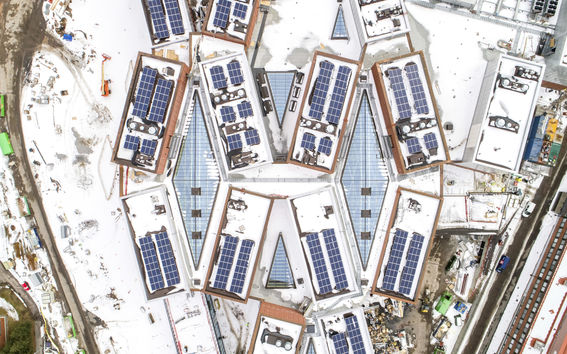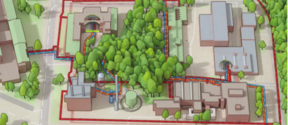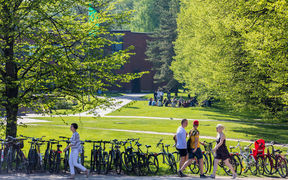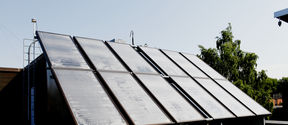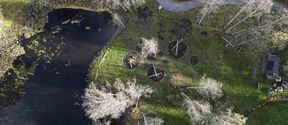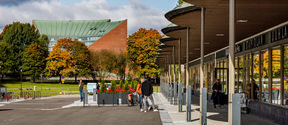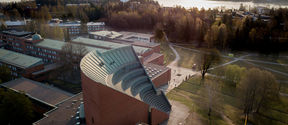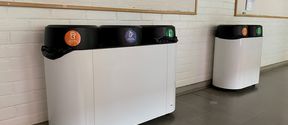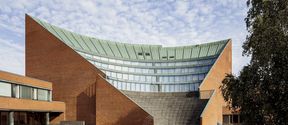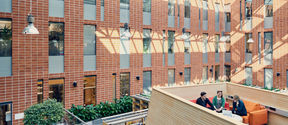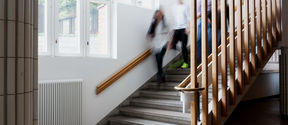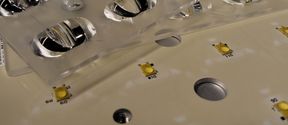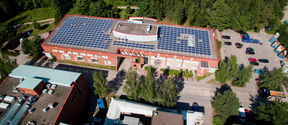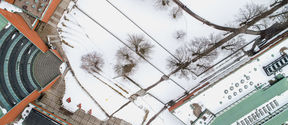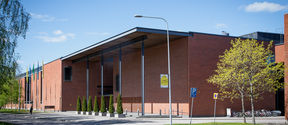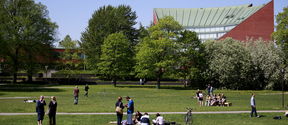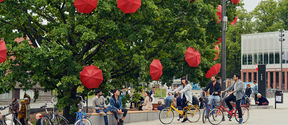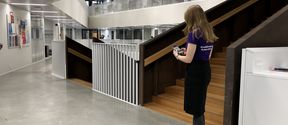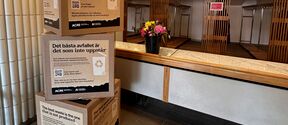The combined power consumption of all campus buildings was 34 GWh in 2024. In relation to square metres, their average power consumption was 93,9 kWh/sqm. This consumption is not divided equally between all buildings, as the six most power-hungry buildings consume approximately 50% of all electricity. Even minor energy efficiency improvements in these six buildings are significant considering the total consumption. Electricity for ACRE is acquired via Nord Pool.
There are a total of 4 solar power plants in the campus:
Sähkömiehentie 5: 103 kWp
Konemiehentie 2: 116,5 kWp
Maarintie 8: 122,4 kWp
Otaniementie 14: 203 kWp
In 2013, some of the electricity procured was certified as renewable energy. In 2014 and 2015, nearly all electricity consumed was covered by certified bio and wind power, in addition to local production. From 2016 to 2021, all electricity consumption was covered using renewable forms of energy. Certified electricity includes a guarantee of origin, i.e. the seller of the electricity must produce at least as much electricity as is indicated in the guarantee using the forms of energy indicated in the guarantee. In 2022 and 2023, an emission-free district heating product was purchased instead of electricity in order to reduce the carbon footprint.
Campus buildings are connected to Fortum's district heating network. The combined consumption of heating energy was 34 GWh in 2024. In relation to square metres, the average heat consumption was 96,3 kWh/sqm.
Espoo's district heat production is committed to carbon neutrality during the 2020s. Coal as a fuel is set to be displaced by 2025. The last coal-burning plant was already phased out ahead of schedule in spring 2024. For more information on Fortum's district heat production, visit the Espoo Clean Heat website. In addition, to cover the peak heat consumption of Otaniemi, mainly in the coldest winter time, heat is produced in the Otaniemi district heating plant. The plant uses natural gas and heavy fuel oil.
District heating certified as originating from 100% renewable sources has been procured to all buildings since 2022. In addition, the buildings in the Aalto Works block receive their heat from the local low heat network using waste heat from the block's buildings and Fortum's air-to-water heat pump plant.
Otaniemi is an area which is beneficial for generating geoenergy – the biggest conventional geoenergy plant in Otaniemi is located in the middle of the campus, under the Metro block -building (Otaniementie 12, 14 and Ekonominaukio 1). The average yearly geonergy production at the campus is 2550 MWh, which corresponds to roughly 5,5% of all the heating energy consumed.
Geoenergy on the campus is produced:
Otakaari 24: approx. 750 MWh a year
Otaniementie 14: approx. 1700 MWh a year
In some of the campus buildings, cooling energy is produced mechanically using a compressor-driven cooling unit. Geoenergy systems are also used for cooling in the summer. In addition, some buildings are equipped with air source heat pumps that act as separate cooling units.
As the power consumption of the cooling units is not measured separately, the need for cooling is estimated on the basis of energy reviews and audits conducted in the buildings. The total cooling energy consumption is approximately 1,000 MWh per year.
On the campus we are actively working to reduce water consumption. To use water resources effectively we are using water-saving or non-water plumbing fixtures. All new urinals are waterless.
Water consumption in the buildings owned by Aalto University was 112 700 m3 in the year 2024.







